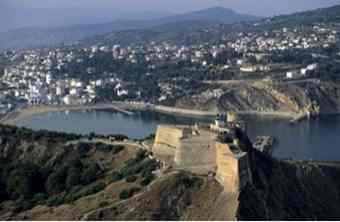Tunisia, which hosts over 7 million tourists a year, is a preferred destination in the Mediterranean basin. The tourism sector contributes efficiently to the current account balance thanks to revenues generated in foreign currency, the growth of GDP and the employment effort, reports the state-run Tunisian News Agency (TAP).
 To boost the sector's competitiveness and performance, emphasis was placed on diversifying products to build a brand that enhances the image of the Tunisian destination.
To boost the sector's competitiveness and performance, emphasis was placed on diversifying products to build a brand that enhances the image of the Tunisian destination.
In this regard, President Zine el Abidine Ben Ali had called, during the cabinet meeting on culture held last August 18, to devise a new strategy to promote cultural tourism during the 2010-2014 period and ensure an optimum use of the country's archeological and historical heritage to attract a new category of tourists, whose number is increasing according to studies and reports of the World Tourism Organisation.
The new strategy involves the implementation of sound and light projects in the most important monuments and archaeological sites. This operation concerns, in a first stage, the Ribat of Sousse and the Fort of Hammamet, as well as the re-organisation of international festivals and the establishment of a communication plan for the marketing of this product, in collaboration between the Ministry of Culture and Heritage Preservation and the Ministry of Tourism.
This strategy also includes other elements, namely producing a national cultural tourism map, fitting out archeological sites, protecting historical monuments, improving reception services in these spaces and integrating all heritage components in tourist tours.
This is the case of the tour of the city of Kairouan or those in progress like the Zaghouan-Carthage water way, the Andalusian tour (Tunis-Testour) and the Medina of Sousse tour.
Currently, finishing touches are being put to the rehabilitation works of several museums and sites, including the National Museum of Bardo, the archeological museum of Sousse, the museum and site of Hidra in the governorate of Kasserine, in addition to the completion of the rehabilitation of the site of Punic ports in Carthage and the start of creation of Web sites for all national and regional museums. This new strategy (2010-2014) aims to promote cultural tourism by encouraging young promoters to innovate and market products based on heritage.
It also seeks to develop a communication and marketing plan focusing on cultural tourism, create a Sahara Museum in the Governorate of Tataouine and complete studies on the restoration of the Aghlabide basins in Kairouan and the second part of the Rakkada Islamic Arts museum, in addition to the installation of traffic signs on roads and the creation of "site museums" in Oudhna, Carthage, in ancient Roman houses, Utique and Bulla Regia (North-West).
Regarding heritage preservation, the Heritage Protection Code was reviewed, archeological maps of rural zones were established and a plan aimed to protect the archeological heritage from looting was devised, thanks to the creation of specialised teams tasked with ensuring the security of the national heritage.
The communication plan will focus on the optimal use of modern communication, particularly the Internet, making documentaries about the archeological and historical heritage, supporting publications on heritage and cultural tourism, developing products based on heritage to keep them abreast with the modern time and increasing festivals and specialised events.
Thanks to these measures, culture stands as a support for developing tourism in Tunisia and contributing to boost the tourism sector in an international context marked by competition and by changes in tastes and trends of interest.
Actually, cultural tourism, which was on the sidelines of the global tourism industry, has become today a determining factor in the promotion and fame of a destination.
According to experts, the rate of cultural tourism in the global tourist flows during the 60's and 70's did not exceeded 5%, whereas the rate is now estimated between 12 and 15% and sometimes 20% in destinations known for their rich archaeological heritage.
Statistics show that the rate of museums and sites attendance has increased significantly. For example, the number of visitors to the Italian city of Venice stands at 12 million people per year.
Visitors to the Louvre in Paris exceed 7 million per year. Mumbai recorded the visit of 2.5 million people and Granada, Spain received 2.5 million tourists per year.
Cultural tourism is great potential, which Tunisia, a country that hosts rich monuments and internationally recognised sites, could make the most profit of.
Source: Global Arab Network [August 25, 2010]